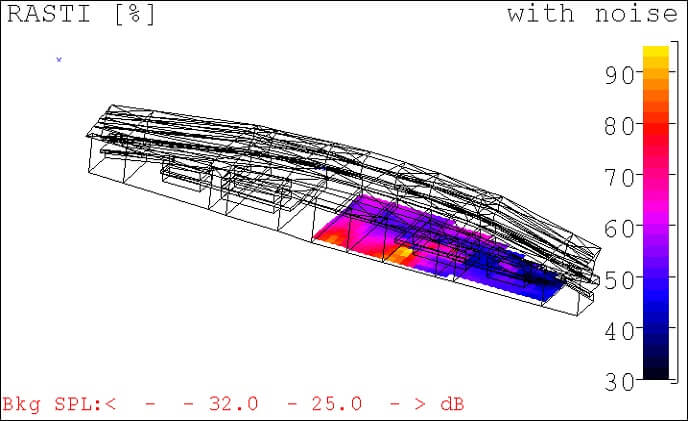Modern technology allows to address people with direct and clear communication. For airport passengers, this means more comfort and more safety.
Airport Acoustics
Ears are humans’ most efficient sense organs. We are only able to smell or feel things that are in our immediate proximity. The eye only works in good lighting conditions. In contrast, our ears are never closed; they are continuously in use, and they even hear around the corner. Up until now, we haven’t benefited very much from this extraordinary ability in public spaces: It is likely everybody has missed a subway stop at least once because it was impossible to understand the announcements. It does not have to be like this. Modern technology allows to address people with direct and clear communication. For airport passengers, this means more comfort and more safety.
Clear Messages
At the German Fraunhofer Institute for Digital Media Technology, researchers develop programs that analyze the acoustic conditions on site, register background noises, and then adjust the frequencies and dynamics of the public address announcements. Such crystal-clear messages could make everyday life at the airport much easier, and in the case of an emergency, they would also assure that passengers receive and understand the exact information they need.
 A complex acoustic prevails at airports. The Room Acoustic Speech Transmission Index (RASTI) illustrates the conditions of audibility and intelligibility at a given place. The dark blue and black areas prevail bad speech intelligibility, the others a sufficient or very good one. A higher intelligibility can be achieved by better insulation or allocation of speakers.
A complex acoustic prevails at airports. The Room Acoustic Speech Transmission Index (RASTI) illustrates the conditions of audibility and intelligibility at a given place. The dark blue and black areas prevail bad speech intelligibility, the others a sufficient or very good one. A higher intelligibility can be achieved by better insulation or allocation of speakers.
Source: Bosch Security Systems
As if it’s whispered in the ear
“Special types of speaker, so-called ‘Beam Steering’ devices, can be adjusted so precisely that they only insonify an area of just a few square meters,” said Dirk Noy from the Swiss engineering office WSDG. “Thus, one can specifically reach the ‘right’ individuals.” Noy has already implemented several so-called "multi-zone" public address systems for sports stadiums and concert halls amongst others. He also works for airports in Europe, North America, and in the Gulf region. For instance, information about boarding delays only concerns those passengers waiting in front of the corresponding gate. So why bother all the others as well? If a large crowd of people has formed at the airport, one could ask one part of the group to exit toward the left, and recommend the other part to move to the right with the help of such "multi-zone" public address systems. Experts agree that the possibility to direct crowds of people using acoustic signals is currently not used enough.
Great Opportunities
In fact, the opportunities seem almost endless. The concept of "wave-field synthesis" gives the chance to equip a room with a circle of speakers. Within this circle and from the control console, a voice can be conducted in a way that it seems as if it virtually moves through the room. Thus, the voice of an airport security staff member could say “Please, follow me” to a group of passengers and head toward the emergency exit. The staff member would not even have to be in the room him- or herself. It’s quite possible that such or similar innovations are soon to be used at the airport. One thing is clear: Modern airports attract the eye with impressive architecture and sparkling facades. Maybe the time has come to also care for the ears of airport guests.
To learn more, please visit Bosch Security Systems here.